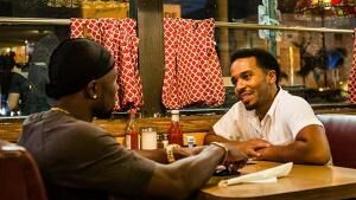
Depictions of queer and trans people have been present in the film medium since its inception more than 100 years ago. But due to censorship and varying degrees of prejudice against the LGBTQ+ community at different points in time, representation onscreen has a long, complicated, and often coded history. While gay characters were frequently used for laughs or not explicitly stated to be queer in most early mainstream Hollywood films, a brief relaxation in Germany’s film production code in the early 20th century allowed for LGBTQ+ classics like “Anders als die Anderen” and “Mädchen in Uniform.”
In Hollywood, the strict Hays Code forbade explicit depictions of homosexuality on film for three decades, during which there were a slew of queer-coded villains. Afterwards, gay characters appeared more, but often in tragic stories like 1961’s “The Children’s Hour.”
Although LGBTQ+ representation remained sparse over the next few decades, queer camp in the 1970s saw a rise in popularity with the increased prominence of “The Rocky Horror Picture Show” and the films of John Waters. Later, the New Queer Cinema in the 1990s flourished, as many independent filmmakers (many of whom were gay) told fluid, empathetic stories about queer individuals.
“Moonlight” made history in 2017 as the first LGBTQ+ movie to win the Oscar for Best Picture. The film, which features an all-Black cast, was one big step toward making gay cinema that isn’t whitewashed, features a range of identities, and doesn’t make its queer characters one-note or vehicles of suffering.
Stacker compiled a list of 50+ significant moments in the history of LGBTQ+ representation on film, using information from cultural critiques, film reviews and retrospectives, film scholars, and historical records to understand how the community has been represented on the big screen over the decades. The history starts in 1894, with the very first gay film, and ends in 2021 with a mainstream children’s movie featuring a main character who is queer.
You may also like: Best Emmy-nominated shows of all time








